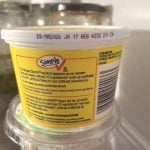Excessive sodium intake may contribute to the premature death of more than 30 Canadians a day.
“The average Canadian eats double the amount of sodium he or she needs each day which can lead to high blood pressure – the No. 1 risk factor for stroke and a major risk factor for heart disease,” says Christine Houde, PHEc, nutrition manager for the Heart and Stroke Foundation of Manitoba (HSFM).
Over time, high blood pressure can damage blood vessel walls causing scarring that promotes the buildup of fatty plaque, which can narrow and eventually block arteries. It also strains the heart and eventually weakens it. Very high blood pressure can cause blood vessels in the brain to burst, resulting in a stroke.
Read Also

Sharing stories to promote Canadian farm safety
Personal stories can sometimes go farther than facts and data to promote safe practices on Canadian farms, Canadian Agricultural Safety Association conference attendees hear.
“Simply taking the salt shaker off the table isn’t enough to shake the sodium habit,” says Jennifer Wojcik, RD, nutrition manager for HSFM.
According to Statistics Canada, processed and restaurant foods are the main source of sodium in the diets of Canadians, accounting for 77 per cent of average daily sodium intake.
“Only about 10 per cent of the sodium in our daily sodium consumption comes from the salt shaker. The real culprits are fast foods, restaurant meals and processed foods such as frozen dinners, luncheon meat, smoked meat and fish, pizza, canned soups, bottled dressings, packaged sauces, condiments such as ketchup and soy sauce, and salty snacks like pickles and potato chips,” says Wojcik.
The Heart and Stroke Foundation of Manitoba recommends that adults limit sodium intake to no more than 2,300 mg per day. While that might seem like a lot, if you start reading food labels, you’ll notice that sodium is hidden in a lot of foods and adds up quickly. Blood Pressure Canada states the average Canadian consumes 3,500 mg of sodium per day.
Some of the steps people can take to lower their sodium intake include the following:
Eat more fresh vegetables and fruit instead of high-sodium snacks.
Reduce the amount of sodium you add while cooking or baking. Try recipes which use seasonings other than salt such as fresh garlic or lemon juice. Or, experiment with a variety of fresh herbs and spices or flavoured vinegars such as balsamic and red wine vinegars.
Consider using products that are identified as sodium-free. For instance, there are many sodium free seasonings on the market now to make things easier for those who don’t have time to experiment with different spice combinations.
Cut down on prepared and processed foods. If choosing pre-packaged foods, look on the Nutrition Facts table for a food option that has less than 10 per cent daily value of sodium.
Go out less often – and cook at home a bit more – to control the ingredients that you consume in your diet.
Watch your sides and condiments – there can be a lot of fat and sodium in things such as mayonnaise, soy sauce, bacon bits and many other sauces, dressings or add-ons.
If you are eating out, check out your restaurant online – many eateries are now posting nutritional information.
“It’s estimated that one out of three Canadians who have high blood pressure would have normal blood pressure just by reducing sodium intake,” says Houde. ”Reduce your risk factors for cardiovascular disease and say no to processed foods, eat out less often and choose fruits and vegetables instead of high-sodium snacks.”
Salt is a combination of sodium and chloride. It’s the sodium component that can raise blood pressure.
Blood pressure is a measure of the pressure or force of blood against the walls of blood vessels called arteries. The top number represents the pressure when your heart contracts and pushes blood out (systolic) and the bottom number is the lowest pressure when the heart relaxes between beats (diastolic).
Blood pressure that is consistently more than 140 / 90 mm Hg is considered high, but if you have diatetes, 130 / 80 mm Hg is high. Normal blood pressure is below 120 / 80 mm Hg.
Heart and Stroke Foundation of Manitoba nutrition managers have prepared four, five-minute cooking segments to be aired on Shaw and WCG-TV throughout the month of March. The segments are also available for download from the foundation website www.heartandstroke.mb.ca.These Heart Smart Home Cooking segments feature lower-sodium recipes developed as a bonus insert for the cookbook: Quick and Healthy Recipes the Whole Family Can Enjoy.
To receive a copy of the cookbook and bonus recipe cards – sponsored by Manitoba Canola Growers and Cargill – call 949-2000 in Winnipeg; 571-4080 in Brandon; or, 1-888-473-4636 in rural Manitoba. A PDF copy can also be downloaded from the Heart and Stroke Foundation of Manitoba website.














